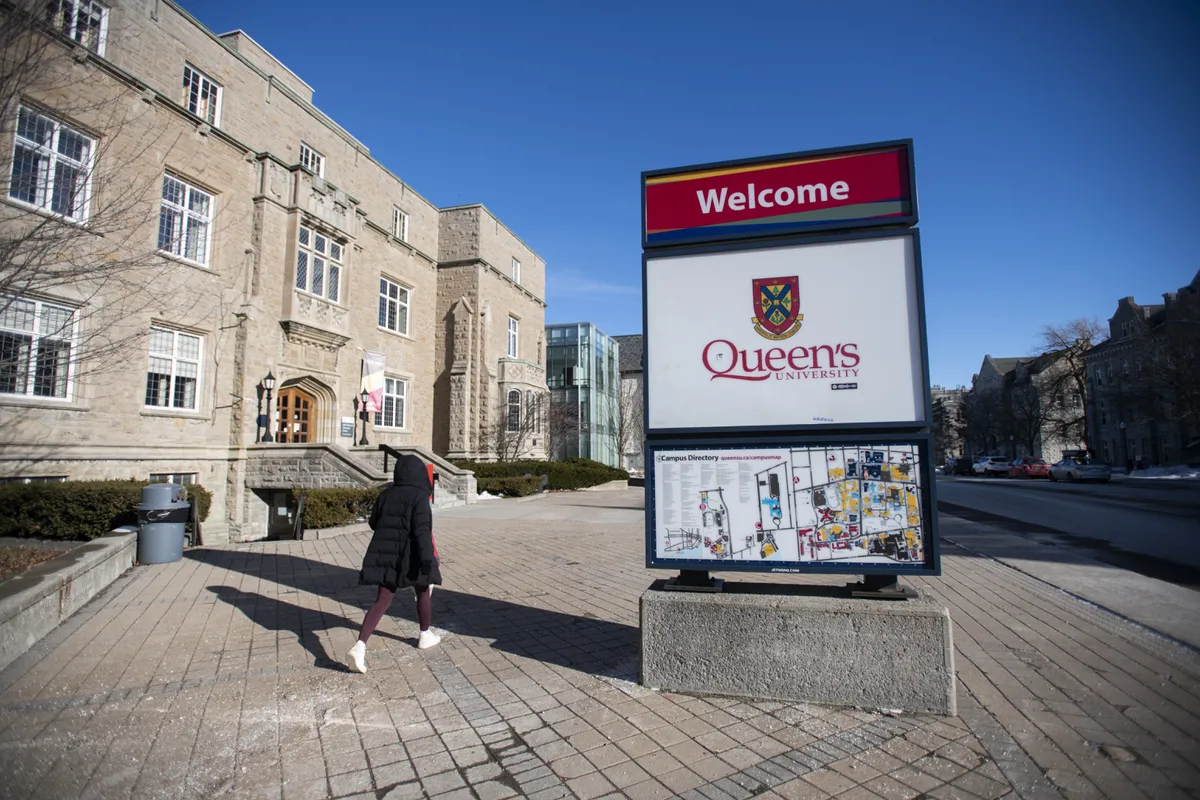
A large sign and campus map on Union St. on the campus of Queen’s University in Kingston, Ont. on Jan 20 2021. FRED LUM/THE GLOBE AND MAIL
When the emergence of the Omicron variant of COVID-19 forced Canadian universities to delay the winter term or begin it online, it was a blow for many students, who feared yet another portion of their young lives would be devoured by pandemic monotony.
But despite the challenges that have accompanied the shift online during the pandemic, students seem to have persevered.
Statistics Canada data for 2020-21 show university participation rates for 20 year-olds at 41 per cent, a significant increase from the usual 36 or 37 per cent of the previous five years. The participation rates were also higher than in previous years for all other ages between 18 and 25.
Enrolment data for the winter term is not yet available, but these numbers suggest the prospect of online learning hasn’t pushed many students away.
Universities also seem to be retaining students at high rates. At Queen’s University, for example, first-year enrolment in the fall was roughly the same as the year before, and up about 16 per cent compared to pre-pandemic levels. Retention of first-year students increased in 2020-21 to 95.4 per cent, up nearly a percentage point over 2019. There doesn’t appear to have been a notable increase in the number of people taking terms away or dropping out, according to Queen’s spokesperson Mark Erdman.
It’s difficult to measure what impact switching back and forth between educational modes has had on students’ academic progress.
In March, 2020, universities shifted rapidly to emergency online delivery of classes for the last part of the winter term. By fall 2020, the picture across the country was mixed, and by fall 2021 many schools had largely returned to in-person lectures. The Omicron variant has pushed universities mainly online for the start of this term. Some have announced plans to return to in-person learning in a matter of weeks, but there is much debate about whether it will be safe for them to do so.
The Canadian University Survey Consortium, which in 2021 polled nearly 13,000 students at a range of large and small universities in their graduating year, found that about two thirds said they were satisfied with the instruction they received online, and about one third said they were not.
Gabby Glasier, a fourth year political science student at Western University, has only a few months remaining before she graduates. Most of her time at university has been spent under the pandemic’s cloud. She said by looking at her transcript it’s easy to tell when classes switched online, because there’s a divot where her otherwise solid grades suddenly take a dip.
“I’m a good student, I’m diligent, I do the readings, but online just didn’t work for me,” Ms. Glasier said.
She said the year spent learning in isolation through her computer was difficult. The energy that comes from being around fellow students was absent, and she felt that absence. It was nothing like the university experience she expected.
It’s hard to get to know classmates and make friends in an online chat, she said. It’s hard to make an impression with professors, which has complicated getting good references for graduate school. She’s praying that her university will be able to resume in-person classes by February, as planned.
“It’s the last semester of my undergrad. It would be really sad to go out online,” she said.
She added that it’s hard to judge whether she has learned less than she would have otherwise, but that she can’t help but feel shortchanged by the experience.
Standardized measures such as the Medical College Admissions Test (MCAT) or the Graduate Record Examination (GRE) don’t show much difference in scores between those who wrote the exams in the pandemic period compared to previous exams. The GRE, a test for admission to some graduate programs, showed almost identical scores for Canadian candidates in 2020 compared to the year before. The MCAT doesn’t keep separate data on Canadian test takers, but its U.S. results have been in line with previous years.
Michelle Stack, a professor in educational studies at the University of British Columbia, said institutions have changed some of their rules around grades to be more compassionate. At the institutional level, students have in some cases been able to change their marks in courses to pass or fail, rather than letter grades, or have been allowed to withdraw without penalty from courses very late in a term.
“I think there’s been a real attempt to try and balance health risks with the needs of students,” Prof. Stack said.
There’s no doubt that many students are feeling distressed by their situation. COVID-19 has amplified inequities, Prof. Stack said, so that those who are well-off tend to fare better, while those without supports may struggle more.
But it’s difficult to know whether students are learning as much as they would have in-person, or whether they have been comparably enriched by the university experience.
“A GRE score tells you about a GRE score. It doesn’t really tell you about what happened in the university,” Prof. Stack said.
JOE FRIESEN
POSTSECONDARY EDUCATION REPORTER
The Globe and Mail, January 17, 2022
